Code Of Chivalry: ‘Knightly’ Behavior, Courageous Medieval Knights, Warriors And Superior Men
A. Sutherland - AncientPages.com - Medieval knights followed chivalry - the lifestyle and moral code. The term takes its name from the French word chevalier (meaning ‘horseman’), and it was with horsemen that chivalry began.
Anyone who could bravely ride into battle on a good horse, he was a knight.
The knights - courageous warriors and superior men - swore service and loyalty to their lords and along with them, went to war and took part in all kinds of adventure, which tested their skills and strength.
This relationship between knights and their lords was an important part of the ‘code of chivalry’, a moral system – a kind of unwritten law, that went beyond rules of fight and had to do with knightly qualities, which defined chivalry.
The code - a mixture of military, social, and Christian ethics - included the values of honor, courtesy, valor, loyalty to a lord, a noblewoman, or simply to a cause, and it had to be followed strictly by knights.
Although chivalry began as a code of conduct for medieval warriors, it adapted to the changing social conditions of the Renaissance, including style, etiquette, and the proper way to conduct a love affair.
It all began around the time of the emperor Henry IV – that is to say, after the year 1000 and continued for several centuries, in Germany and in England, but especially in France, where the so-called tournaments, pas d'armes were favorite entertainment at the French court of the 16th century.
The culture of chivalry remained popular in the late Middle Ages and well into the Renaissance. Wealthy nobles of the Renaissance continued to promote military traditions and to show off their strength in tournaments and in war.
However, unlike medieval knights, who usually acted on their own, the nobles had a tendency to form knightly orders and brotherhoods supported by the ruling government. By 1469 such orders had formed in almost every major court in Europe.
The nobility had a passion for chivalry and the cult of chivalry was fostered at the royal court; prominence was given to games of chivalry - joust and tournaments - the games, which were widely appreciated spectacles. A knight would demonstrate his skills and courage and the finest warfare, in these games. He also had to meet many competitors.
Knights from many countries gathered to test their strength at these war games. Dressed in full armor they galloped towards one another at full tilt, trying to unhorse the other with his powerful lance. The lady of the castle presented the winner with a prize – usually a garland of flowers.
These knightly games were closely linked to the flourishing culture of chivalry and knighthood, which had found expression in the rise of courtly romantic literature.
However, to please the ladies a knight had to do much more than shine at feats of arms.
He had to behave in a noble and moderate manner, not curse or swear as soldiers usually did; he had to master chess-playing and poetry, which was not difficult because many knights were often accomplished, poets.
Bravery was not enough in order to be a good knight. It was the knight’s duty to protect the weak and defenseless, women, widows, the poor, and orphans. He had to be neither brutal nor cowardly, and in battle, he must only fight man to man, never two against one.
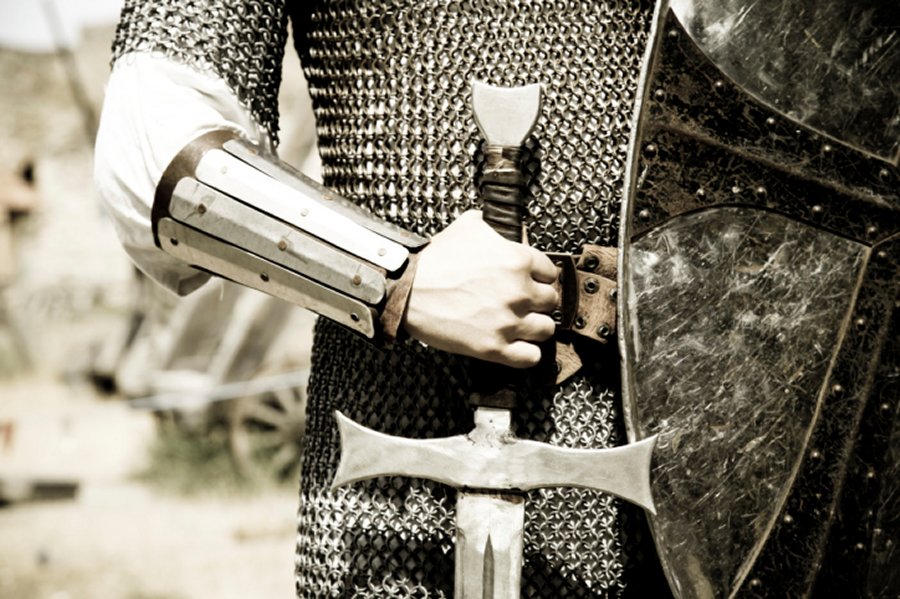
However, unlike medieval knights, who usually acted on their own, the nobles had a tendency to form knightly orders and brotherhoods supported by the ruling government.
Unfortunately, the well-intended and beautiful "chivalric code", rarely affected most knights, who plundered, slaughtered, and looted often when given the chance. Our modern notion of knights is very much based in the ideas of chivalry, and we have to blame medieval romantic literature for presenting knights as the chivalrous ideal.
The medieval tradition of chivalry did not survive because of the political situation in Europe following the Renaissance. People’s self-interest and materialism eliminated the knightly code of honor and the spiritual capability of chivalry of old times has been replaced by conventional social etiquette, which includes the act of showing regard for others, good manners and politeness.
Today, we do not have knights with formidable weapons and chivalric tournaments, where they present their strength, skills, and courage. But we have courageous firefighters, brave policemen, and many other men who take part in chivalry and usually do not even expect appreciation for what they’ve done.
Written by – A. Sutherland AncientPages.com Staff Writer
Copyright © AncientPages.com All rights reserved. This material may not be published, broadcast, rewritten or redistributed in whole or part without the express written permission of AncientPages.com
Expand for referencesReferences:
Stevenson, Chivalry and Knighthood in Scotland, 1424-1513
Meron, Bloody Constraint: War and Chivalry in Shakespeare
Mills, History Of Chivalry, Volym 2
More From Ancient Pages
-
 Sirrush – Powerful “Glamorous Snake” Guarded Marduk But Did This Hybrid Really Exist?
Myths & Legends | Apr 29, 2022
Sirrush – Powerful “Glamorous Snake” Guarded Marduk But Did This Hybrid Really Exist?
Myths & Legends | Apr 29, 2022 -
 Oldest Door Lock Comes From Ancient Egypt
Ancient History Facts | Jun 27, 2018
Oldest Door Lock Comes From Ancient Egypt
Ancient History Facts | Jun 27, 2018 -
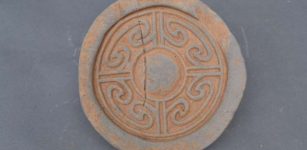 Discovered Inscription On Ancient Stone Vessel Reveals Location Of Legendary Tomb Of Chinese Emperor
Archaeology | Jan 11, 2021
Discovered Inscription On Ancient Stone Vessel Reveals Location Of Legendary Tomb Of Chinese Emperor
Archaeology | Jan 11, 2021 -
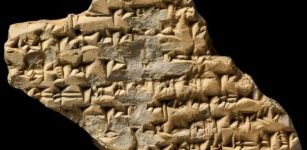 Artificial Intelligence And Clay Tablets: Not Yet A Perfect Match
Scripts, Paintings & Inscriptions | Oct 12, 2023
Artificial Intelligence And Clay Tablets: Not Yet A Perfect Match
Scripts, Paintings & Inscriptions | Oct 12, 2023 -
 Origin Of The Genetic Code – Study
DNA | Dec 16, 2024
Origin Of The Genetic Code – Study
DNA | Dec 16, 2024 -
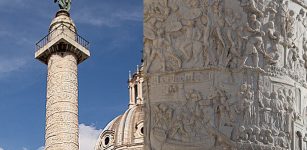 Trajan’s Column – A Roman Triumphal Column In Ancient Rome
Ancient History Facts | Aug 31, 2021
Trajan’s Column – A Roman Triumphal Column In Ancient Rome
Ancient History Facts | Aug 31, 2021 -
 Satellite Images Reveal A Mysterious Ancient Site On A Remote Island Is Much Larger Than Previously Thought, Prompting New Questions
Archaeology | Nov 28, 2024
Satellite Images Reveal A Mysterious Ancient Site On A Remote Island Is Much Larger Than Previously Thought, Prompting New Questions
Archaeology | Nov 28, 2024 -
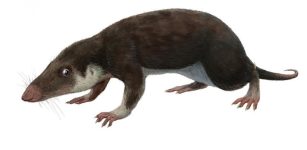 Mysterious Ancestor Of All Mammals Identified Through Genome Reconstruction
Archaeology | Sep 30, 2022
Mysterious Ancestor Of All Mammals Identified Through Genome Reconstruction
Archaeology | Sep 30, 2022 -
 England’s Oldest Bible Reveals Surprising Hidden Secrets
Biblical Mysteries | Mar 19, 2016
England’s Oldest Bible Reveals Surprising Hidden Secrets
Biblical Mysteries | Mar 19, 2016 -
 Thousands Unknown Ancient Structures Seen From Space: Puzzling Aerial Archaeology In The Middle East
News | Feb 15, 2014
Thousands Unknown Ancient Structures Seen From Space: Puzzling Aerial Archaeology In The Middle East
News | Feb 15, 2014 -
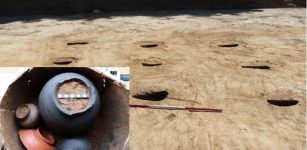 Ancient Roman Settlement Discovered In Deal, UK
Archaeology | Dec 16, 2022
Ancient Roman Settlement Discovered In Deal, UK
Archaeology | Dec 16, 2022 -
 Advanced Technology Of The Ancients: Artificial Platforms Of Mighty Nan Madol
Civilizations | Sep 14, 2018
Advanced Technology Of The Ancients: Artificial Platforms Of Mighty Nan Madol
Civilizations | Sep 14, 2018 -
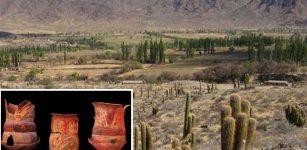 Pre-Inca Societies In The Andes Lacked Hierarchical Leadership And Shared Power Before The Incas Arrived
Archaeology | Dec 13, 2017
Pre-Inca Societies In The Andes Lacked Hierarchical Leadership And Shared Power Before The Incas Arrived
Archaeology | Dec 13, 2017 -
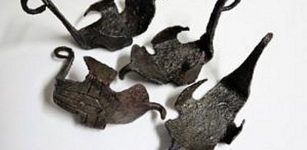 Remarkable ‘Hipposandals’ Found At Vindolanda
Archaeology | Aug 18, 2018
Remarkable ‘Hipposandals’ Found At Vindolanda
Archaeology | Aug 18, 2018 -
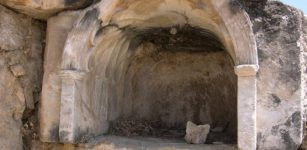 Plutonium: Dangerous Pluto’s Gate Was An Ancient Gateway To Hell At Hierapolis That Was Real
Featured Stories | Feb 18, 2017
Plutonium: Dangerous Pluto’s Gate Was An Ancient Gateway To Hell At Hierapolis That Was Real
Featured Stories | Feb 18, 2017 -
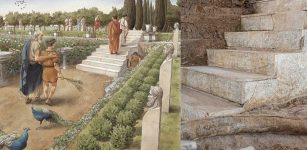 Lavish Home And Exotic Garden Of Emperor Caligula Discovered In Rome
Archaeology | Nov 19, 2020
Lavish Home And Exotic Garden Of Emperor Caligula Discovered In Rome
Archaeology | Nov 19, 2020 -
 Monumental Structure Unearthed During Excavations Of Urartu-Era Karmir Blur
Archaeology | Nov 25, 2022
Monumental Structure Unearthed During Excavations Of Urartu-Era Karmir Blur
Archaeology | Nov 25, 2022 -
 On This Day In History: Island Of St. Helena – Last Residence Of Napoleon Discovered – On May 21, 1502
News | May 21, 2016
On This Day In History: Island Of St. Helena – Last Residence Of Napoleon Discovered – On May 21, 1502
News | May 21, 2016 -
 Ruins Of Xunantunich – Mayan City That Once Flourished
Civilizations | Jan 12, 2022
Ruins Of Xunantunich – Mayan City That Once Flourished
Civilizations | Jan 12, 2022 -
 Tangaroa – Polynesian God Of Ocean And Fish In Constant Struggle With His Brother
Myths & Legends | Jun 2, 2020
Tangaroa – Polynesian God Of Ocean And Fish In Constant Struggle With His Brother
Myths & Legends | Jun 2, 2020



